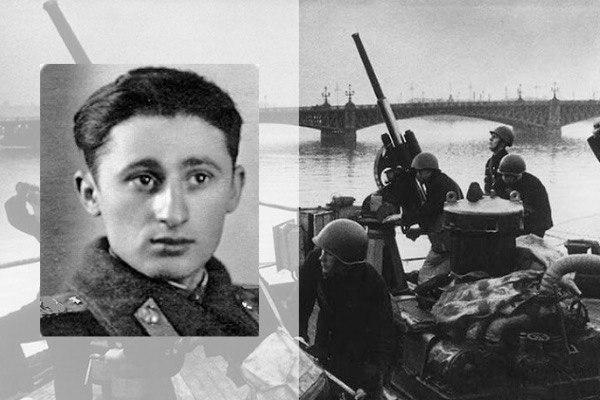
History 02/03/20 Contrary to instructions: as a 19-year-old operator saved the Baltic fleet
Shortly before the beginning of the great Patriotic war as a graduate of the Odessa school Gregory Helfenstein was drafted into the army. He got the troops VNOS (air surveillance, warning and communication). And this circumstance determined the whole subsequent life of Gregory Ilich.
service in the armed forces VNOS
the pre-war biography of the hero who saved the Baltic fleet, any unusual facts did not differ. Grigory Ilyich Helfenstein was born in 1922 in Odessa. There he graduated from high school. Almost immediately after that, in 1940 he was called up for military service. As recalled in one of his interview with the magazine “Neva” in 1996, Gregory himself Ilyich, his service, he began in Baku city, the 28th radiopaque INSTALLMENT. These forces, created in tsarist times, there were in our army until 1952.
According to Nikolay Simonov, the author of the book “the information revolution Failed. Conditions and development trends in the USSR electronics industry and mass communication”, in year Gregory Helfenstein were tested pulse radar “Redut” with two synchronously rotating cabins. In July 1940 the radar station was adopted by the Soviet parts INSTALLMENT called RUS-2 (radiological aircraft). It is the work on RUS-2 and mastered Helfenstein to the beginning of the great Patriotic war.
Raised the alarm and saved the fleet
Shortly before the attack of Nazi Germany on the Soviet Union Gregory Helfenstein was transferred to Leningrad for further service in the 72nd separate RadioButton INSTALLMENT. As stated in the book “Redoubts” in the defense of Leningrad” (compilers – Helen and Eugene Centanni), Helfenstein took the position of senior radar operator. Shortly after the announcement of the outbreak of hostilities, the battalion received two type system RUS-2. One of them getLa notation “Redut-2”, the second “Redut-3”. Sergeant Gregory Helfenstein headed one on duty last system.
How to write Mikhail Zefirov, Nikolai Bazhenov and Dmitry Degtev in the book “the Purpose – ships. The confrontation between the Luftwaffe and the Soviet Baltic fleet”, 21 September 1941, about 11 a.m. Gregory Helfenstein noticed the movement of groups of enemy aircraft. Usually so began the raids on Leningrad. This time, however, the operator counted about 220-250 aircraft. They all headed for Kronstadt, they had the order to destroy the artillery of the Baltic fleet. Contrary to the instructions of Helfenstein by direct communication with the headquarters of the PVO KBF informed about the dangers.
the Radar as a vocation
it is Noteworthy that the technique of Gregory Helfenstein failed, because the aircraft in fact was not 250, but only 25. However the alarm raised by the senior radar operator, was not about and helped the Soviet side to avoid large losses. No wonder, subsequently, the journalists called the attack “a failure of pearl Harbor”.
Grigory Ilyich no awards left: the victory, he met with the order of the Patriotic war, 2 nd degree and several medals on his chest. However, for the case that occurred in September of 1941, Helfenstein never received.
As stated in the “History of Petersburg” (2001), after the war, Grigory Ilyich remained in Leningrad. A few years later he received the diploma of the Leningrad Polytechnic Institute and continued to engage in the radar. Subsequently, Helfenstein was the author of dozens of inventions in this and other areas. All of his designs he patented. Among them are, for example: loudspeaker Pluton, the display device coordinate information, control unit a tension of the magnetic tape in the apparatus of magnetic recording, and even a device for frying food products “Helper”.
Yulia Popova
Source:
© Russian Seven
Featured articles Share: Comments Comments on the article “Contrary to instructions: as a 19-year-old operator saved the Baltic fleet” Please log in to leave a comment! br>
Share on Tumblr
















